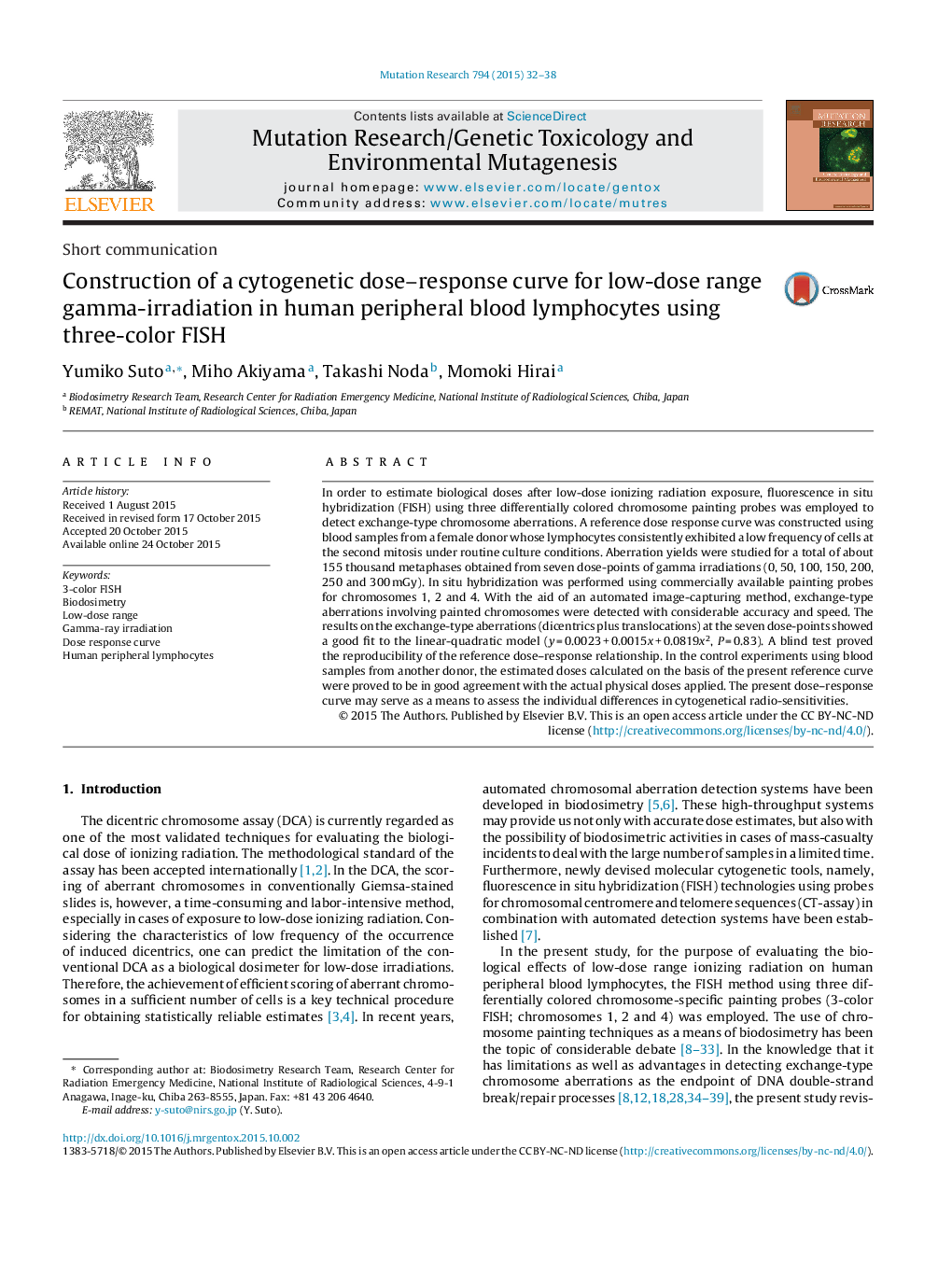| Article ID | Journal | Published Year | Pages | File Type |
|---|---|---|---|---|
| 8456309 | Mutation Research/Genetic Toxicology and Environmental Mutagenesis | 2015 | 7 Pages |
Abstract
In order to estimate biological doses after low-dose ionizing radiation exposure, fluorescence in situ hybridization (FISH) using three differentially colored chromosome painting probes was employed to detect exchange-type chromosome aberrations. A reference dose response curve was constructed using blood samples from a female donor whose lymphocytes consistently exhibited a low frequency of cells at the second mitosis under routine culture conditions. Aberration yields were studied for a total of about 155 thousand metaphases obtained from seven dose-points of gamma irradiations (0, 50, 100, 150, 200, 250 and 300 mGy). In situ hybridization was performed using commercially available painting probes for chromosomes 1, 2 and 4. With the aid of an automated image-capturing method, exchange-type aberrations involving painted chromosomes were detected with considerable accuracy and speed. The results on the exchange-type aberrations (dicentrics plus translocations) at the seven dose-points showed a good fit to the linear-quadratic model (y = 0.0023 + 0.0015x + 0.0819x2, P = 0.83). A blind test proved the reproducibility of the reference dose-response relationship. In the control experiments using blood samples from another donor, the estimated doses calculated on the basis of the present reference curve were proved to be in good agreement with the actual physical doses applied. The present dose-response curve may serve as a means to assess the individual differences in cytogenetical radio-sensitivities.
Related Topics
Life Sciences
Biochemistry, Genetics and Molecular Biology
Cancer Research
Authors
Yumiko Suto, Miho Akiyama, Takashi Noda, Momoki Hirai,
